
Australian native shrub Geraldton Wax (chamelaucium uncinatum
Chamelaucium uncinatum, commonly known as Geraldton wax, is a flowering plant endemic to Western Australia. It is an erect shrub 0.5 to 4m high, bearing white or pink flowers June-November. The flowers (somewhat resembling those of the tea tree) last a relatively long time after cutting, making the plant popular in horticulture.
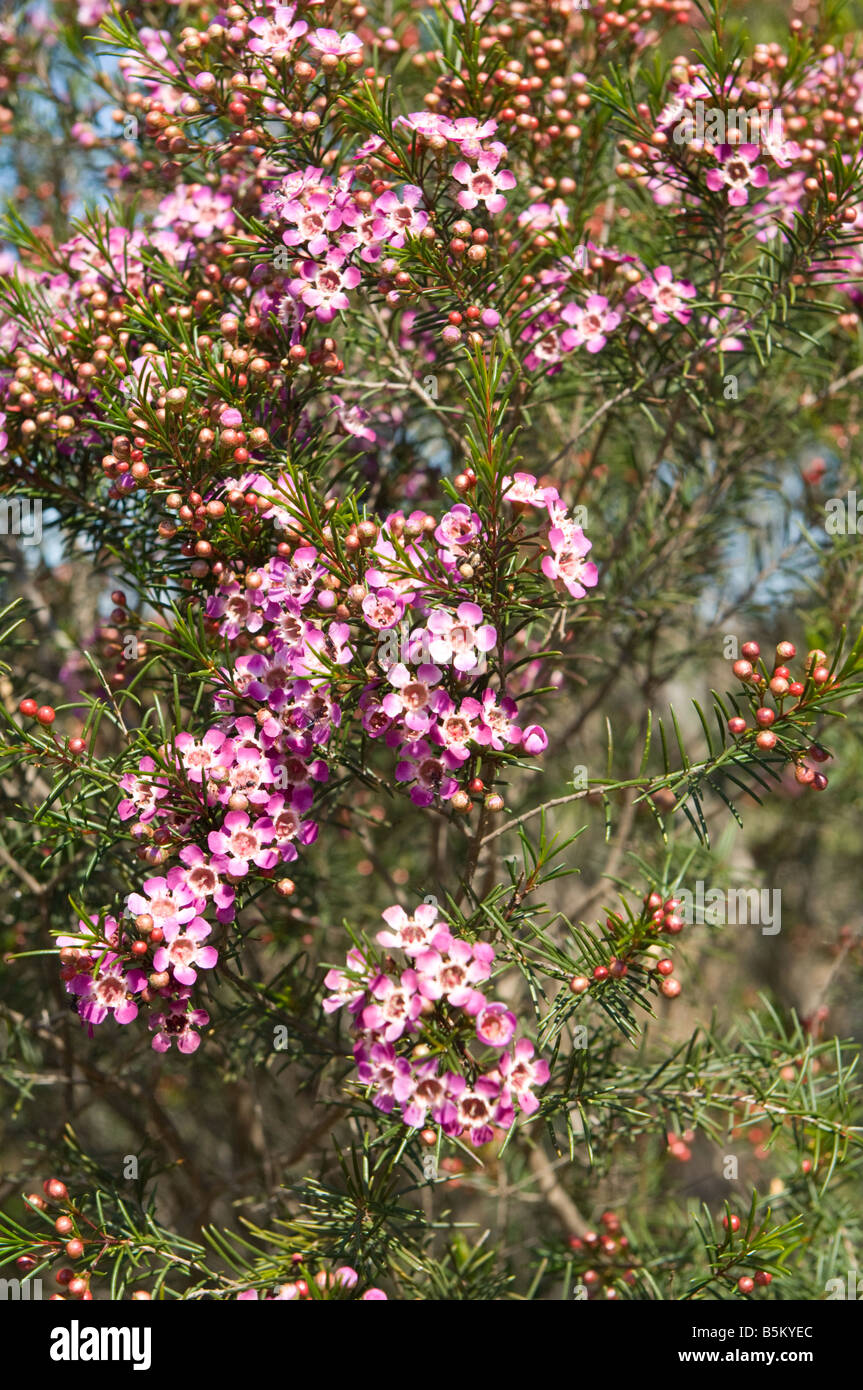
Geraldton Wax Chamelaucium uncinatum in bloom Wagin Western Australia
Location Chamelaucium uncinatum is thought to only occur naturally on the coastal (Quindalup) dunes between Perth and Geraldton. It prefers white, grey or yellow sand, over limestone or laterite. It is now found in coastal areas, edges of swamps, hillsides and plains. Priority for removal

"Australian Native Geraldton Wax Flowers" by jodik75 Redbubble
Chamelaucium uncinatum, also known by its common name of Geraldton Wax, is a dense but spreading shrub that can grow between two and six metres in both height and width. Geraldton Wax flowers in winter and spring months with a massive display of aromatic blooms that bees, butterflies and other insects simply love.. Australia. Entry is free.

Geraldton Wax . My absolute fave! I'm loving seeing the beautiful
Geraldton Wax (Chamelaucium uncinatum) is an attractive Western Australian shrub or small tree. It is a favourite in native gardens, with its needle-like leaves and waxy pink or red flowers that appear from later Winter to Spring. Geraldton Wax is part of the Myrtaceae family, and thankfully it is easy to grow Geraldton Wax in Perth .
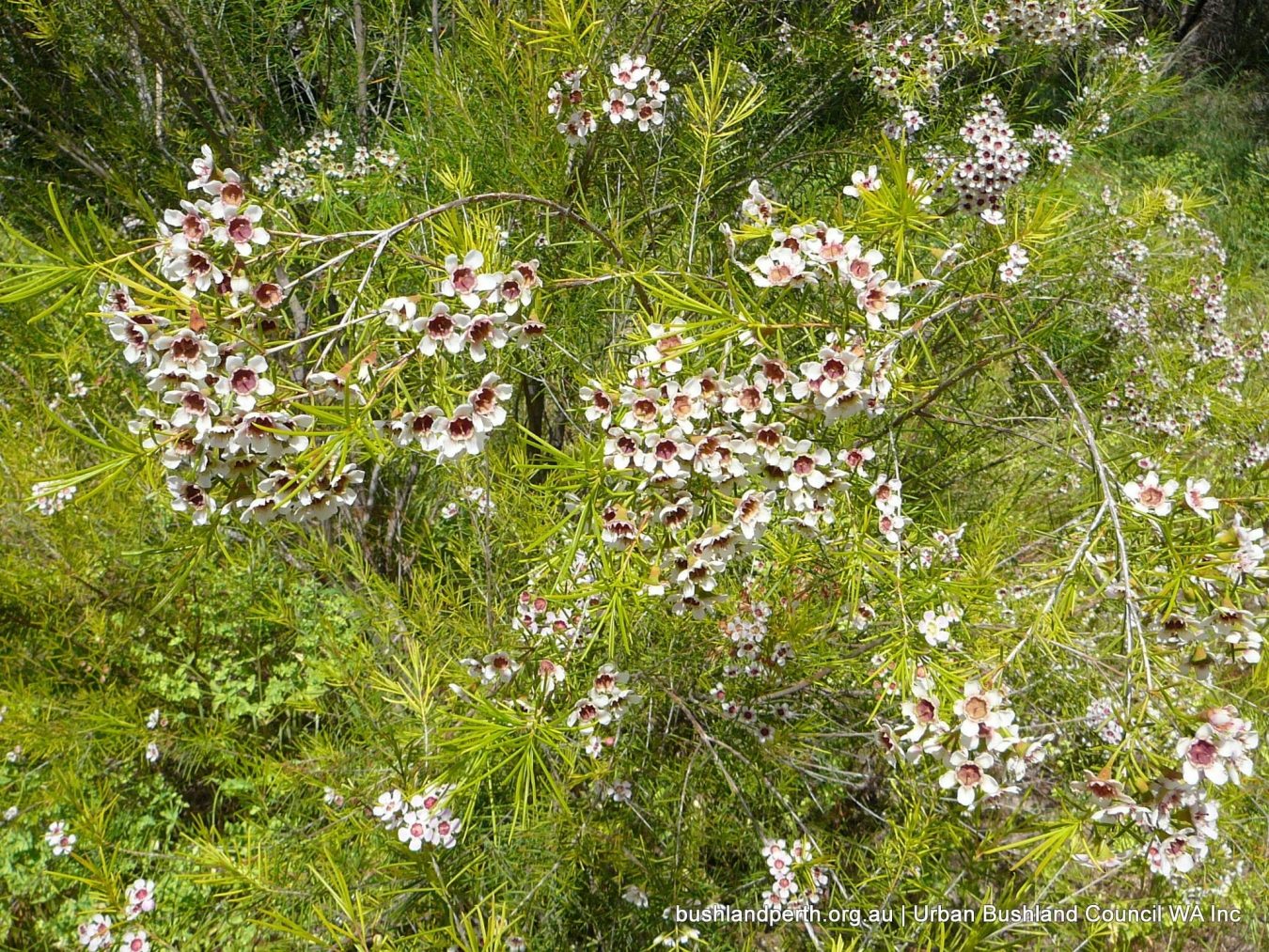
Geraldton Wax Urban Bushland Council WA
Jambinu Zest is a type of Geraldton Wax, a widely cultivated flowering shrub native to Western Australia. While commercial varieties of Geraldton Wax are commonly identified by their ornamental qualities, this bushfood herb gets its name from the Yamatji name for its home region and its strong citrus flavour.
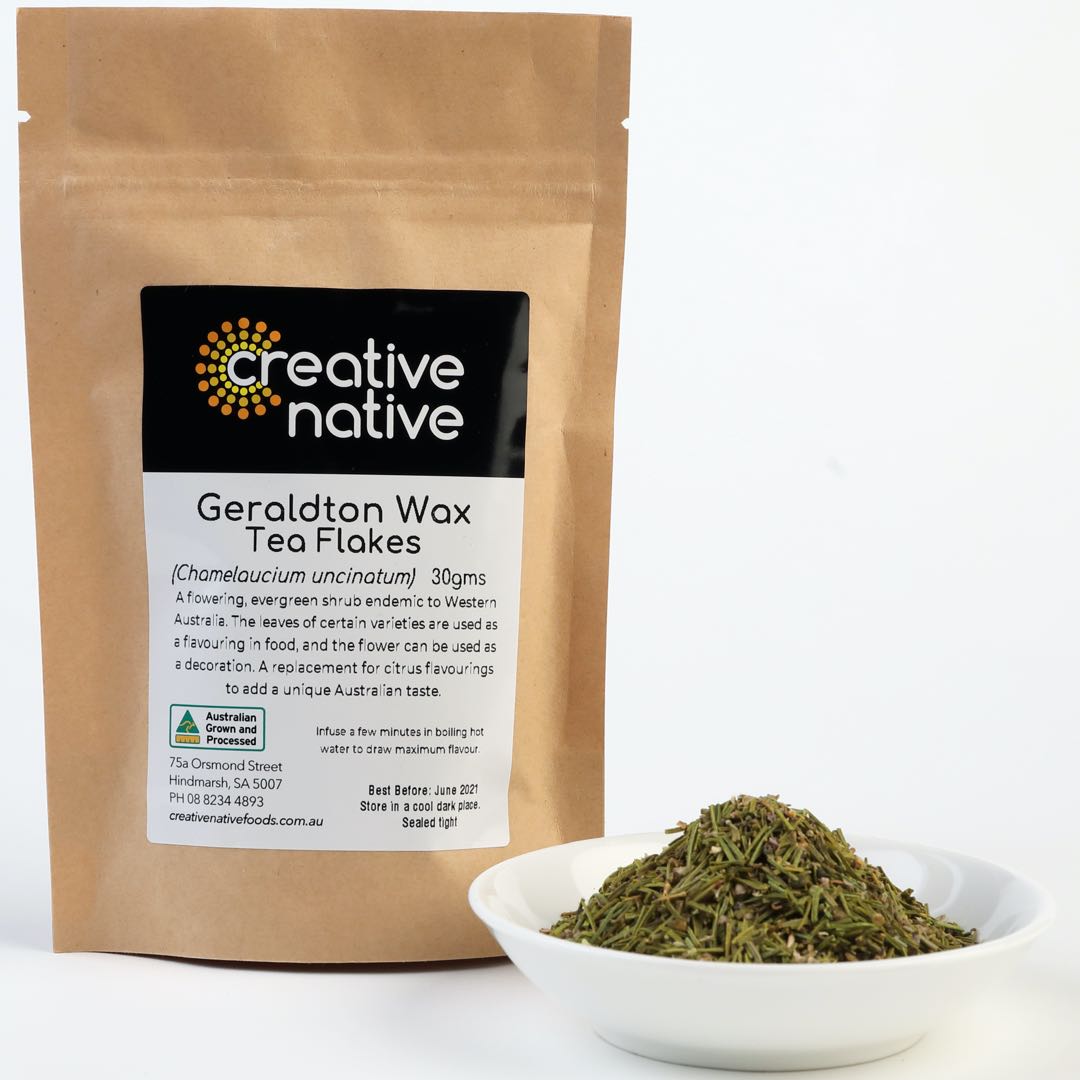
Geraldton Wax Flakes 30g Creative Native Foods
Geraldton wax is one of Australia's most famous wildflowers and is widely used as a cut flower in Australia and overseas. The flowers last for well over a week when cut. A number of different colour forms have been selected including: 'Album'; white 'Purple Pride'; purple 'University'; purple/red 'Jubilee'; pink
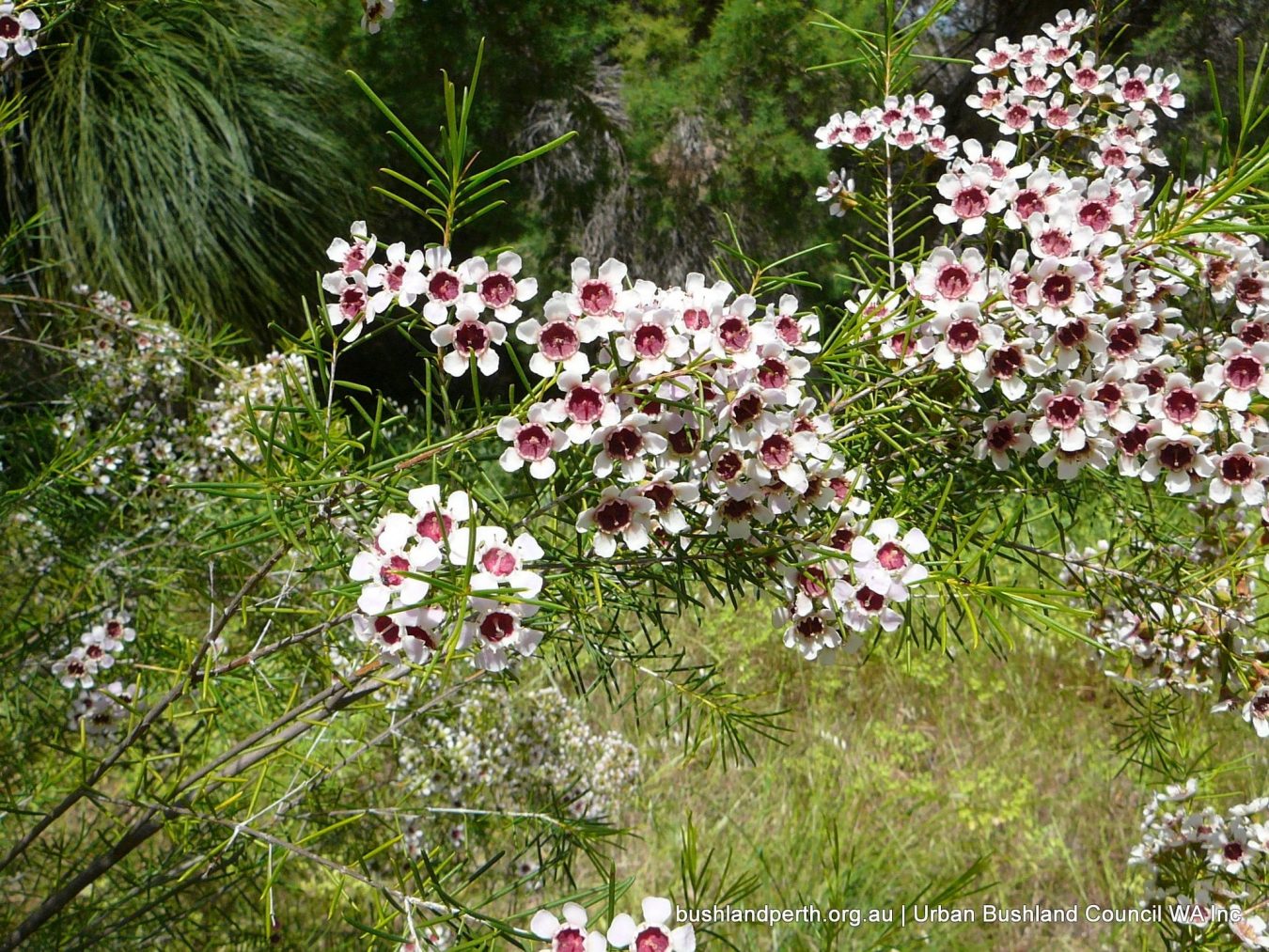
Geraldton Wax Urban Bushland Council WA
Scientific Name: CHAMELAUCIUM uncinatum Common Name: Geraldton Wax Alternative Common Name: Geraldton Wax Family: Myrtaceae Height: Up to 2.5m (8′) Width: Up to 4m (13′) Description: A charming, very hardy, evergreen shrub with delicate and aromatic soft needle leaves in light and dark green tones. Flowers: Masses of wax-like purple, red, pink or white flowers from late Winter to Summer.
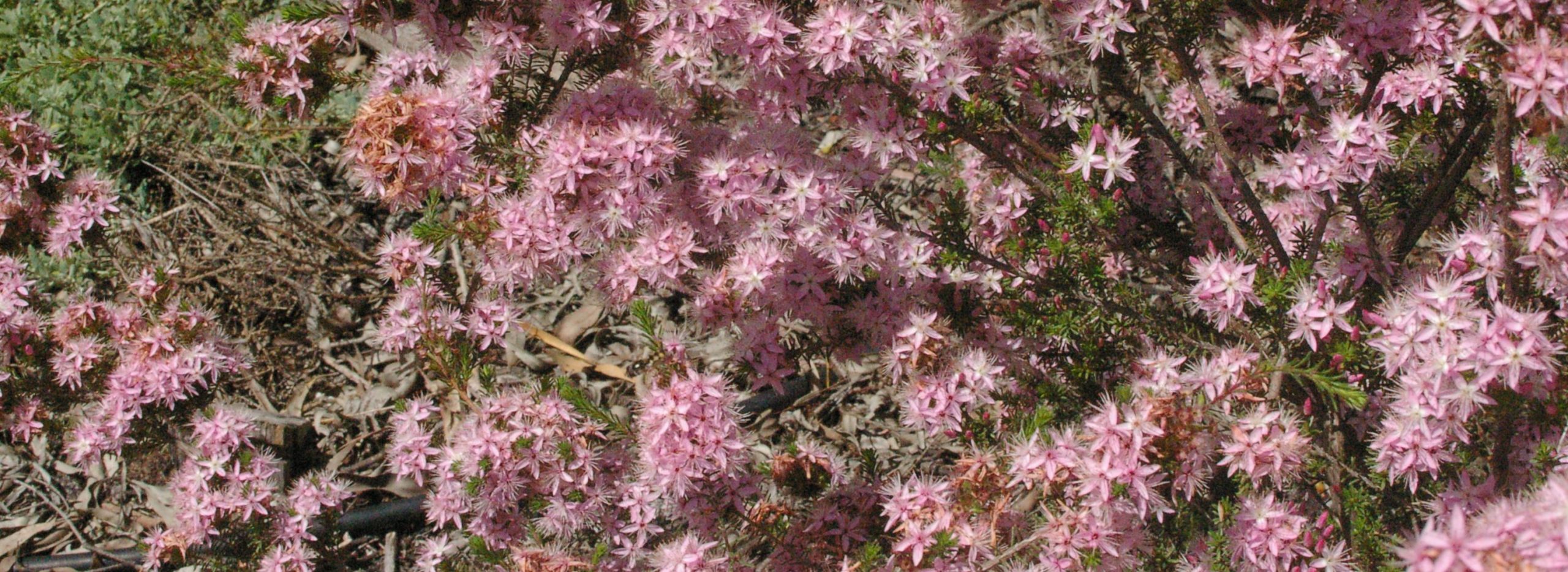
Geraldton Wax and Relatives Australian Native Plants Society (Australia)
Geraldton Wax ( Chamelaucium uncinatum) is an attractive Western Australian shrub or small tree. It is a favourite in native gardens, with its needle-like leaves and waxy pink or red flowers that appear from later Winter to Spring. Full sun to part shade Water well after planting. Requires little water once established Well drained

Geraldton wax A favorite Australian wildflower Rosalindentree
Geraldton wax ( Chamelaucium uncinatum) is a beautiful flowering Australian native shrub that brings colour to gardens from late winter to spring. As the common name suggests, Geraldton wax comes from Western Australia. Its mainly pink or white flowers have small, stiff petals, which give them the description of 'wax' flowers.
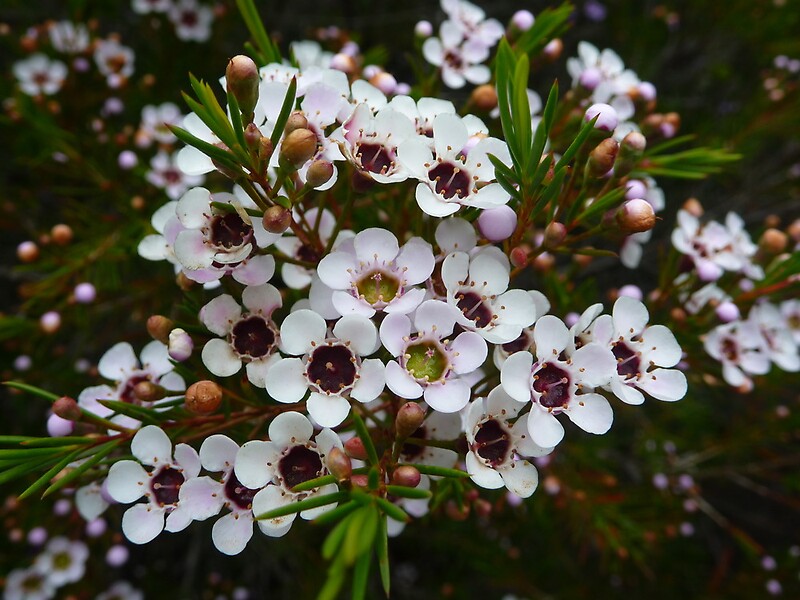
"Chamelaucium uncinatum, Geraldton Wax" by Emma Sterling Redbubble
Geraldton wax is a type of plant commonly found in the Wheatbelt region of Western Australia. Here is everything you need to know about Geraldton Wax! What is Geraldton Wax? Geraldton Wax is a flowering shrub, native to Western Australia. It has been used both medicinally and in cooking by Aboriginal people for thousands of years.

Geraldton wax, one of my favorites, and native to Australia. Can't find
Geraldton Wax and Relatives. The 'Chamelaucium Alliance' is a group of plants in the myrtle family (Myrtaceae), the best known member being the Geraldton Wax, Chamelaucium uncinatum.Others in this group include the fringe myrtles (Calytrix), feather flowers (Verticordia), copper cups (Pileanthus) and Darwinia.Members of the group can be found in all States but the majority occur in Western.

GERALDTON WAX Flower photos, Flowery, Plants
Sat, 17 June 2017 7:00PM. Despite its common name many species of Geraldton wax actually originate from the south-west of WA. Credit: Kellie Lewis. The hardy Geraldton wax has come a long way over the past decade, thanks to improved breeding and hybridisation of a few different Chamelaucium species. Digby Growns, the senior plant breeder at.
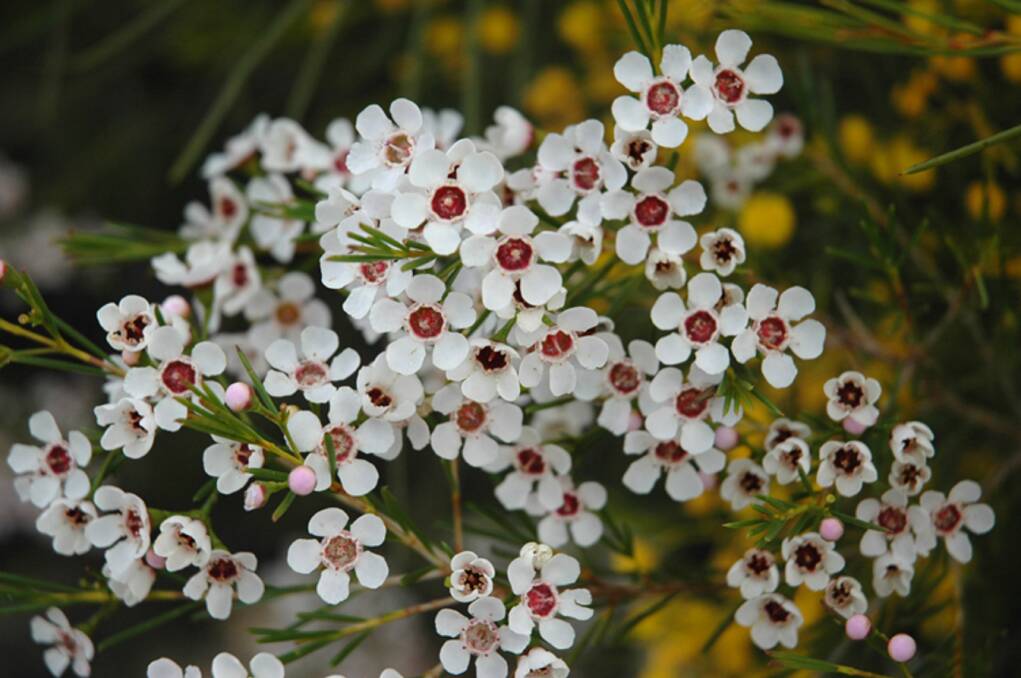
Spring flowers Geraldton wax an Australian wildflower favourite The
Chamelaucium uncinatum - geraldton wax. Chamelaucium uncinatum - geraldton wax. The profusion of long lasting waxy flowers on a spreading but dense shrub are the outstanding features of this iconic Australian plant. It is one of the world's great cut flowers and is used extensively as a backing flower in arrangements.

Plant profile Geraldton wax The West Australian
Wax flower is native to Australia, and its other common name, Geraldton wax, relates to the Western Australian town where it's found growing on heathland. It's not sufficiently hardy to grow outside all year round in the UK, although it does make a good conservatory plant, or a house plant given the right growing conditions. Unpruned plants.

Geraldton Wax Australian native flowers, Australian flowers
Waxflower is the common name for a small group of shrubs in the genus, Chamelaucium. The genus is entirely native to Western Australia, and endemic to the south west, where it grows largely in open land in isolation.

Chamelaucium (Geraldton Wax) Mallee Native Plants
A new edible Geraldton wax flower has been developed to add a uniquely Australian zest to sauces, stocks and botanical gin The flavours can be difficult to describe, breeders say, but include a distinct citrus tang Branded edible plants are expected to be available to home gardeners within 12 months